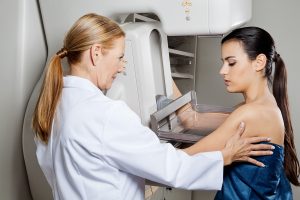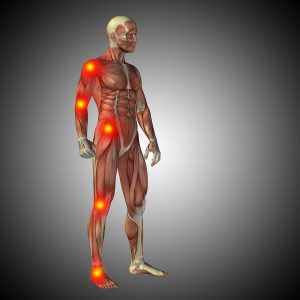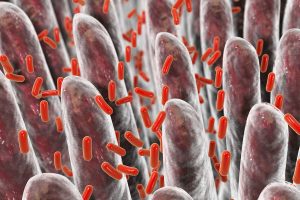A clinical trial found modified poliovirus effective against brain cancer. 61 patients with glioblastoma, the most deadly brain cancer there is, have been enrolled in this trial since 2012.
Glioblastoma treatment with genetically modified poliovirus
Dr. Gromeier, one of the lead cancer researchers at Duke University, Durham, North Carolina has done animal experiments. Unlike poliovirus, he found that genetically modified poliovirus was harmless for the central nervous system and yet he found modified poliovirus effective against brain cancer. This genetically modified poliovirus was attacking glioblastoma cells in cell cultures and in human brains. Dr. Annick Desjardins, a co-author of the study explained that the researchers had to take a piece of RNA away from the poliovirus and replace it with a neutral piece of RNA. This way it is still attracted to the numerous poliovirus receptors, which are expressed on many human cancers. The genetic sequence that allows poliovirus to reproduce in normal cells was taken out with the genetic modification. An inert RNA piece from the rhinovirus, the cause of the common cold was replacing this.
Effect of the genetically modified poliovirus
This way the modified poliovirus is no longer destroying nervous tissue. But the virus can still multiply in the glioblastoma cells, release toxins and kill these cancer cells.
Dr. Bryan Choi is a fellow in the Cellular Immunotherapy Program at Massachusetts General Hospital Cancer Center. He also works at the Department of Neurosurgery at Harvard Medical School. Although he was not part of this study he stated that this study was a giant step forward. “Perhaps the most promising aspect is the ability for this genetically modified virus to not only directly kill brain cancer cells, but to release tumor antigens,” Choi said. Antigens are toxic substances that stimulate the immune system to mount an immune response against the cancer. This immunotherapeutic effect is an important aspect of this new treatment modality.
Some human statistics of the pilot study showing modified poliovirus effective against brain cancer
Here are the highlights.
- 21% of the poliovirus patients are still alive three years after treatment; this compares to just 4% of the control patients who only received chemotherapy.
- The average survival time for the 61 patients who have received the genetically modified poliovirus therapy was 12.5 months. This compares with 11.3 months for a control group of matched patients. These had received standard treatment (chemotherapy).
- Some patients were much better responders than others. A 20-year old man a 60-year-old man survived 69 months (nearly 6 years). They are still alive today. This was unthinkable of in the past for patients with glioblastoma.
Repeat modified poliovirus therapy for glioblastoma recurrence
Dr. Darell D. Bigner, a co-author of the study, a professor of pathology and emeritus director observed the following. Some patients experienced initial reduction of the glioblastoma, and when the cancer came back they received repeat modified poliovirus treatments. To the surprise of the investigators the tumors shrank again and again. This was never the case with conventional chemotherapy. Once a glioblastoma is chemotherapy-resistant, chemotherapy will not work again.
Experience with modified poliovirus therapy
- In this trial treatment for glioblastoma started with implanting a catheter right into the center of the glioblastoma. An infusion of the engineered poliovirus followed, a process that could take up to 6.5 hours. Removal of the catheter was next.
- In the beginning researchers used higher doses of the genetically engineered poliovirus. Some people developed severe inflammation causing seizures, which needed treatment. Confusion and language difficulties were also side effects. Others developed pronounced nausea. The researchers decided to lower the dosage of the genetically engineered poliovirus, and the patients still had good clinical results.
- “We are presently enrolling in a phase 2 trial combining the genetically modified poliovirus with one dose of chemotherapy,” Desjardins said. “We are also enrolling in a trial for pediatric brain tumor patients.” In addition studies using genetically engineered poliovirus against breast cancer and against skin cancer are also in the planning stage.
- There are other new approaches where there the doctor injects the photosensitizer indocyanine into breast cancer tissue. Next the doctor points a laser beam near the infrared frequency of light to the cancer area. You find details about this procedure here.
Conclusion
A new approach to treating glioblastoma, one of the deadliest brain cancers, has shown promising results. A genetically engineered poliovirus is no longer making the person sick with polio, but instead destroys glioblastoma cells and prolongs patients’ lives. Some patients lived up to 6 years while controls lived less than one year. The effect of this new treatment occurs from the release of toxins within the glioblastoma cancer. This leads to cancer cell death and the release of these toxins. The immune system receives stimulation to recognize and destroy the remaining glioblastoma cells. At this point the basic steps of this new therapy are in place.
Future direction of research
But the same method will one day likely be in use for other cancers. There are plans for new clinical trials to examine this further. The researchers also want to test cure rates of a combination of chemotherapy and genetically engineered poliovirus therapy. This will answer the question whether the combination treatment will be better than genetically engineered poliovirus therapy alone.















